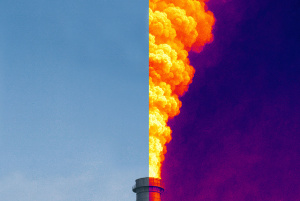Stranded in a vicious cycle? The case for transformation in animal agriculture

Executive summary
Research commissioned by the Changing Markets Foundation surveying 201 respondents from the investment community shows that 82% agreed that climate change presents a material risk to meat and dairy industry-related investments and 84% believe that a lack of mitigation of climate change could lead to stranded assets in this industry. Investors also overwhelmingly (94%) think that reducing methane emissions alongside carbon emissions is important, while 83% think that investors should encourage companies to reduce their methane emissions. More than half of respondents (55%) think that investors are not sufficiently addressing these risks.
This survey provides a good insight into what the financial sector finds important with regards to how the meat and dairy sector will address its climate footprint and adapt to increasingly destabilised climate system. Current global actions to reduce greenhouse gas (GHG) emissions are wholly inadequate if warming is to be limited to 1.5˚C. We have already exceeded 1.1˚C and are on a path to 3˚C temperature increase. To meet the 1.5˚C target, global net zero must be achieved by 2050 at the latest and there need to be rapid and deep cuts in emissions of methane, a potent GHG which has 82.5-times more warming potential than CO2 over a 20-year period, and other short-lived climate pollutants. A reduction of 45% of methane emissions by 2030 would avoid nearly 0.3˚C degrees of warming by the 2040s. Yet, methane emissions continue to rise even faster than CO2 and 2021 saw a record increase in methane levels for the second year in a row.
Food production – especially the production of meat and dairy – is responsible for around 37% of GHG6 and is uniquely dependant on stable climate conditions. Business as usual growth in animal products would account for 49% of the total GHG emissions budget for 1.5 degree by 2030. Livestock agriculture is also the single largest source of methane, responsible for around 32% of anthropogenic methane emissions.
Climate science is not reflected in the business-as-usual growth projections for the meat and dairy sector. The assumption is that meat production will expand by 40mt to 366mt by 2029. Dairy production is expected to grow by 1.6% per year by 2029. EAT-Lancet projects that both red meat and dairy production will increase by over 50% by 2050 compared to 2010 baseline. On the other hand, climate scientists expect a decline in livestock of 7-10% if we were to reach 2°C by 2050, with economic losses between $9.7 and $12.6 billion.12 The alarming effects of climate change on the sector multiply the more that temperatures increase. And negative climate impacts on the sector are not in the future – they are already impacting farmers around the globe.
The findings of the survey and interviews conducted for this briefing show that the investment community recognises the risks of climate change but is gripped by an inertia that prevents action. The majority of survey respondents were concerned that not enough is happening to mitigate climate impacts. They also recognise that the more we delay mitigation, the graver the consequences.
Financial institutions and actors in the finance sector should engage with the meat and dairy industry and ensure that it begins its transformation by radically reducing its carbon and methane emissions. Actions investors can take range from requesting companies to report and reduce methane emissions to supporting the growth of genuinely sustainable alternative protein and better food production practices. Society is currently at a crucial crossroads that will determine the future of food production for decades to come and investors have an important role to play in this transition.
You might also like...

Big Emissions, Empty Promises
Big Emissions, Empty Promises, exposes weak national policies and corporate commitments that fall short of effectively reducing methane emissions and achieving meaningful climate action in agriculture. Read ...

Methane Unmasked
To investigate and visualise the issue of leakages further, Changing Markets Foundation and Deutsche Umwelthilfe (DUH) inspected two biogas plants in Denmark, which both have connections to the country’s big...

Running Latte: Slow Progress on Methane in the Dairy and Coffee Industry
An assessment of 20 of the world’s largest dairy and coffee companies, with combined revenues of over $420 billion, finds that most lack methane targets, credible action plans, or basic transparency around t...